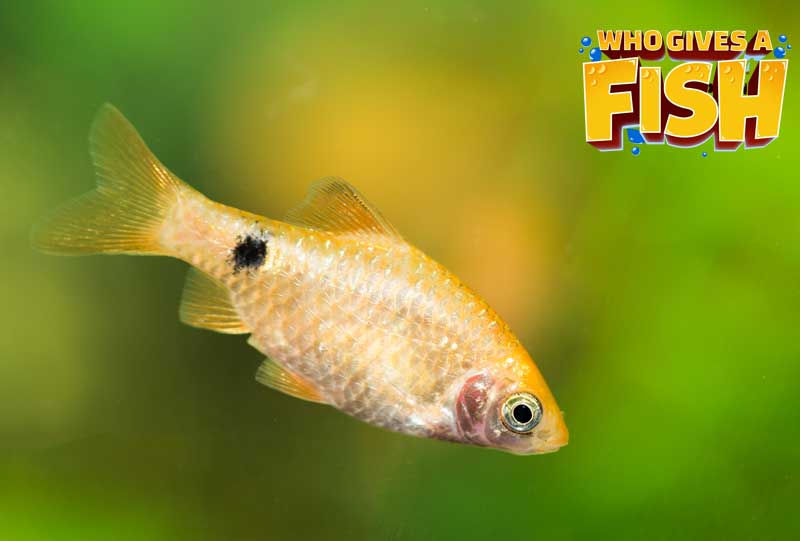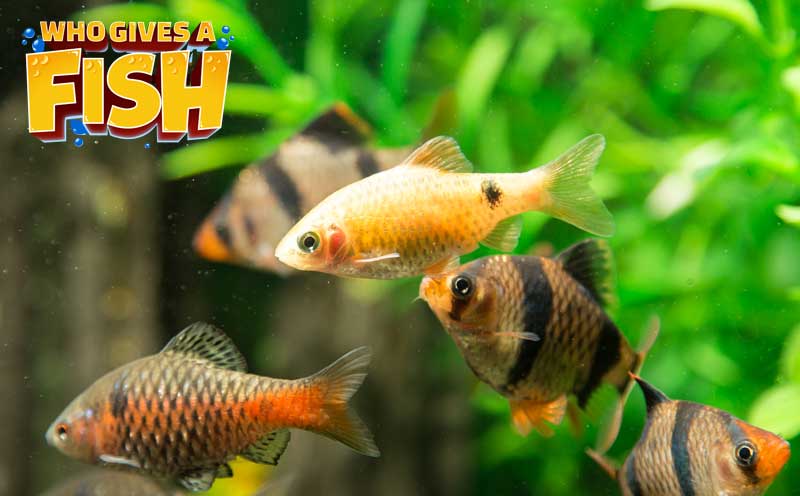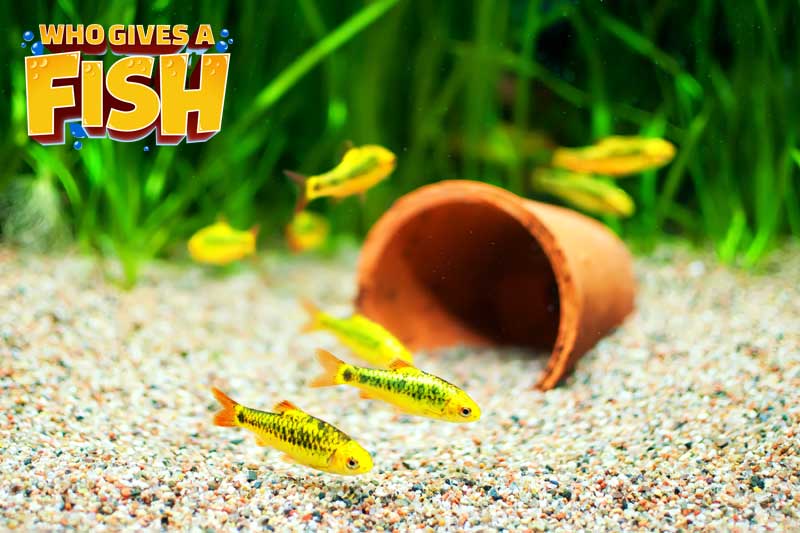Gold Barb
The Gold Barb is an extremely favoured freshwater aquarium fish for novice aquarists due to their rugged and tough body. It is also known as Goldfinned Barb, Chinese Barb, Golden Barb, Half-Banded Barb, Schuberti Barb and Sachsi Barb. It is distributed within South East Asia that is generally found in the Red River Basins which flows through Vietnam and China. It inhabits slow-flowing tributaries and standing water bodies such as irrigation channels and swamps, and it is usually associated with areas of riparian vegetation or dense aquatic areas, and forms schools close to the substrate within a depth of 5 metres.
- Experience Level: Beginner
- Hardiness: Moderate
- Minimum Tank Size: 30 G (115 L)
- Maximum Size: Up to 3 in (8 cm)
- Temperament: Peaceful
- Temperature: 72°F – 82°F (22°C – 28°C)
- pH Range: 6.0 – 8.0
- Water Hardness: 5 – 25 dGH
- Diet: Omnivore
Table of Contents
Introduction
Aquarium Setup
Feeding
Breeding and Social
The Gold Barb (Also known as Puntius sachsii) is a ray finned fish that belongs to the family Cyprinidae, of Class Actinopterygii, under Order Cycriniformes. It has an orange-gold body and reddish fins.
They generally have dark irregular spots on the body and a dark uneven bar at the base of their tail. Their sides are a metallic green or are yellowish in colour. An adult Gold Barb has a curved back and small barbels which are based near the corners of the mouth, on the upper jaw.
The gold barb is an omnivore fish and in the wild, it eats both meaty and vegetable foods, ranging from insects and small worms to plant matter. It breeds in free-standing ponds and outdoor pools during the summer months and withstands cooler temperatures better than any other tropical fish. This species can grow up to 8 cm long and its life span can range between 5 and 7 years.
Aquarium Setup
A 20 gallon tank or larger suggested to keep your gold barb in. The Gold Barb adopts many hiding places and requires a generous amount of swimming room. It does not do very well in planted aquariums because it will likely nip at the plants. The gold barb is an active, placid schooling species of fish that spends a majority of its time in the mid-level and bottom of the water. It likes quite soft, slightly acidic water but does well over a range of pH which ranges from 6.0 to 8.0. It can endure a moderate amount of density in the wate,r which ranges between 5° and 25° dH.
Gold Barb Aquarium Guide
- Minimum Tank Size: 30 G (115 L) although 50 G is more suitable.
- pH Range: 6.0 – 8.0
- Water Hardness: 5 -25 dGH
- Temperature: 72 – 82° F (21.1 – 27.8° C)
- Lighting: Any
- Substrate: Any
- Water Flow: Low to moderate
- Tank Region: Often hides around the bottom/middle, but will swim in all regions.
Feeding
The gold barb is an omnivore, and in the wild, it eats both meaty foods and vegetables, ranging from insects and small worms to plant matter. It should be fed with diverse diet that should be designed for tropical omnivores mixed with plant based flake foods and algae. The gold barb also takes bloodworms, frozen foods, brine shrimp and Tubifex worms. It should be fed 2 to 3 times per day.
Gold Barb Feeding Guide
- Diet: Omnivore
- Frequency: 2 – 3 times daily
- Pellet Foods: Yes (soak in water first to soften)
- Flake Foods: Yes
- Live Foods: Yes (take care of your smaller fish that will fit in their mouth)
- Meat Foods: Live and freeze dried foods such as brine shrimp, blood worms and daphnia.
- Vegetable Foods: Yes
Breeding
The gold barb is hard to differentiate between male and female. The male usually has a smaller and more streamlined body and can sometimes turn a more golden/orange colour during the spawning period. The female has a stockier body shape with slightly duller colouration.
The Gold barb is an egg scattering fish, which scatters their eggs over plants preferably fine leaved plants such as Java Moss. During breeding season, the male gains a much brighter body, with an orange and red belly, while the female gains a dimmer colour and also a bit plumper. The breeding tank should have 800 F water temperatures with pH 6.5 which tend to inspire them to breed.
The tank should ideally be at least two feet long. The spawning usually takes place when the tank starts to get light, usually in the morning. The female lays over 400 yellowish colour eggs at one spawning. The eggs generally hatch in 2-3 days. After spawning, parents should be removed from tank to prevent the eating of the eggs. Fry usually hatch in a couple of days and then it should be fed with baby brine shrimp, liquid fry food or other fry goods.
Social
The Gold Barb is placid fish that can be kept with fish like the Peppered Catfish, Pristella Tetras, Corydoras catfish, Rummynose Tetras, Cherry Barbs, Harlequin Rasboras, White Cloud Mountain Minnows, Scissortail Rasboras, Glowlight Tetras, Lemon Tetras, Zebra Danios, Black Widow Tetras, Mollies, Emperor Tetras, Platies, Head and Tail light tetras, swordtails and Glass Bloodfin Tetras. They should not be put with large combative or predatory fish like, Guppies, Endlers Guppies and Siamese fighting fish. Appropriate care should be taken, and 25-50% of the tank water should be replaced at least twice a month.




